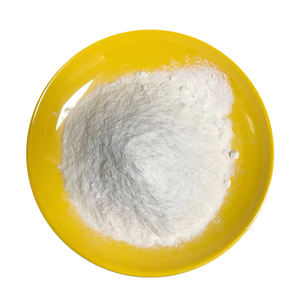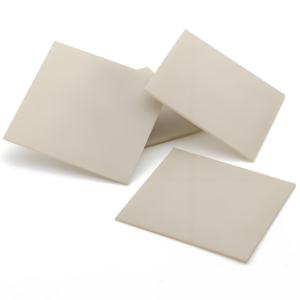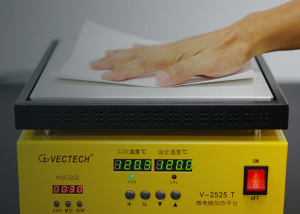Professional industry ceramic supplier, silicon nitride, silicon carbide, aluminum nitride and any other kinds of ceramics.
1. Introduction
Just 36 hours ago, a major materials science lab in Dresden announced a breakthrough in reusable silicon carbide crucibles that can withstand over 1,800°C without cracking—a development poised to revolutionize metal casting and semiconductor production. Suddenly, everyone from metallurgists to kitchenware marketers is shouting ‘silicon carbide!’ But here’s the kicker: your ‘silicon carbide ceramic baking dish’ from that trendy online store? Yeah… it’s probably not actually made of silicon carbide. Let’s sort fact from fiction.

2. What Exactly Is a Silicon Carbide Crucible?
A silicon carbide crucible is a high-performance container crafted from silicon carbide (SiC)—an advanced ceramic known for its extreme hardness, thermal conductivity, and resistance to thermal shock. Unlike your grandma’s clay pot, these crucibles laugh in the face of molten aluminum, copper, and even reactive alloys.
- They’re used in foundries, labs, and aerospace manufacturing.
- Typical operating temps: up to 1,650°C (some grades go higher).
- Not to be confused with alumina (Al2O3) or zirconia (ZrO2) crucibles, which have different strengths and weaknesses.
3. Why Silicon Carbide? The Superpowers of SiC
Silicon carbide isn’t just tough—it’s practically a superhero in the ceramics world. It conducts heat better than most metals (yes, really), resists oxidation, and won’t warp when you yank it from a furnace and dunk it in water (don’t try this at home, though).
Compare that to boron carbide vs silicon carbide: boron carbide (B4C) is harder but more brittle and way pricier. SiC hits the sweet spot between performance, durability, and cost.
4. Beyond Crucibles: The Wild World of Silicon Carbide Products
While the silicon carbide crucible steals the spotlight, SiC shows up everywhere:

- rbsic silicon carbide tile block: used in kiln linings and wear-resistant floors.
- silicon carbide ceramic columns and rings: structural supports in high-temp reactors.
- silicon carbide burner nozzles and bricks: built to handle combustion chaos.
- silicon carbide tubes: including thermocouple protection tubes and porous ceramic tubes for filtration.
And no, despite what Etsy listings claim, silicon carbide ceramic dinner plates, butter dishes, or Christmas platters aren’t real—at least not in food-safe, consumer-grade form. True SiC is sintered at insane temperatures and isn’t FDA-approved for dinnerware. Those black ‘silicon carbide’ plates? Likely just glazed stoneware with a marketing gimmick.
5. Silicon Carbide vs. Silicon Nitride: The Ceramic Cage Match
Enter silicon nitride (Si3N4)—another advanced ceramic heavyweight. While silicon carbide excels in thermal conductivity and abrasion resistance, silicon nitride shines in fracture toughness and thermal shock resistance under rapid cycling.
You’ll find silicon nitride crucible factories producing labware for aggressive chemical environments. Custom silicon nitride heat shields, rings, and plates are common in turbine engines and semiconductor tools.
But don’t mix them up! A ‘silicon nitride ceramic’ part won’t magically turn into a ‘silicon carbide crucible’—they’re chemically and functionally distinct.
6. Debunking the Dinnerware Myth

Let’s address the elephant in the kitchen: dozens of e-commerce sites now list ‘silicon carbide ceramic baking dish,’ ‘silicon carbide ceramic salad bowl,’ and even ‘silicon carbide children’s plates.’ Spoiler: these are almost certainly not made of actual silicon carbide.
Real silicon carbide is black, extremely dense, and requires specialized sintering (often with additives like boron or carbon). It’s not hand-thrown on a pottery wheel. If it’s labeled ‘staub’-style or comes in ‘blue white porcelain,’ it’s traditional ceramic—maybe with a SiC-inspired name for SEO juice.
True advanced ceramics like silicon carbide or silicon nitride are used in industrial, not culinary, settings. Save your casserole dreams for cast iron or borosilicate glass.
7. Recent Innovations & Market Trends
The past week saw increased investment in RBSiC (reaction-bonded silicon carbide) manufacturing, with new rbsic ceramic pillar and tile block production lines launching in Germany and Japan. These components are critical for electric vehicle battery production furnaces and solar wafer processing.
Meanwhile, the high purity silicon nitride powder market is expanding, driven by demand for si3n4 insulating rings and custom machined parts in semiconductor fabs.
On the flip side, confusion persists in consumer markets—where ‘ceramic’ is slapped onto everything from tap discs to oven trays. Real silicon carbide ceramic disc taps? Possible in industrial valves. Your kitchen faucet? Probably just standard ceramic cartridges.
8. How to Spot Real vs. Fake Silicon Carbide Products
Ask these questions:
- Is it marketed for >1,400°C use? If yes, maybe real.
- Is it glossy, colorful, or microwave-safe? Almost certainly not SiC.
- Does the spec sheet mention ‘sintered SiC,’ ‘RBSiC,’ or ‘SiC content >90%’? Then it’s legit.
When in doubt, contact the manufacturer—not the Amazon seller with 4.2 stars and stock photos.
9. Conclusion
The silicon carbide crucible remains a cornerstone of high-temperature industrial processes—unmatched in performance for melting, casting, and chemical handling. But as buzzwords spread, so does misinformation. Remember: if it’s meant for your dinner table, it’s probably not silicon carbide. Save the real SiC for the furnace, not the fondue.
Our Website founded on October 17, 2012, is a high-tech enterprise committed to the research and development, production, processing, sales and technical services of ceramic relative materials such as What. Our products includes but not limited to Boron Carbide Ceramic Products, Boron Nitride Ceramic Products, Silicon Carbide Ceramic Products, Silicon Nitride Ceramic Products, Zirconium Dioxide Ceramic Products, etc. If you are interested, please feel free to contact us.




